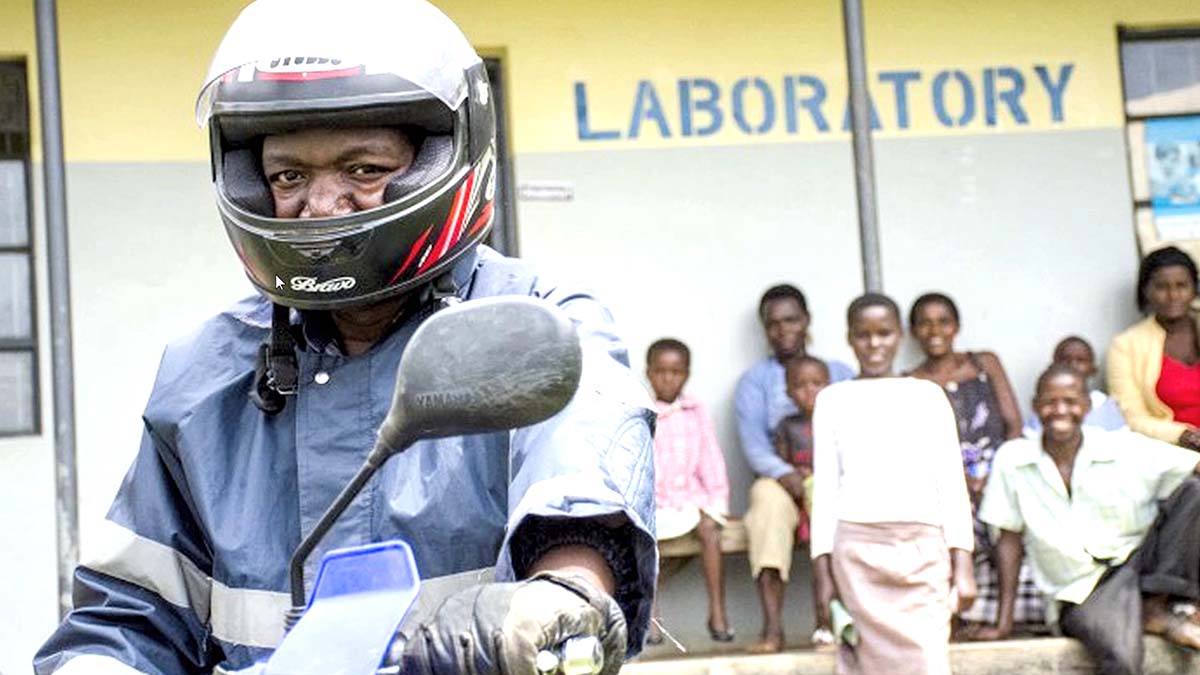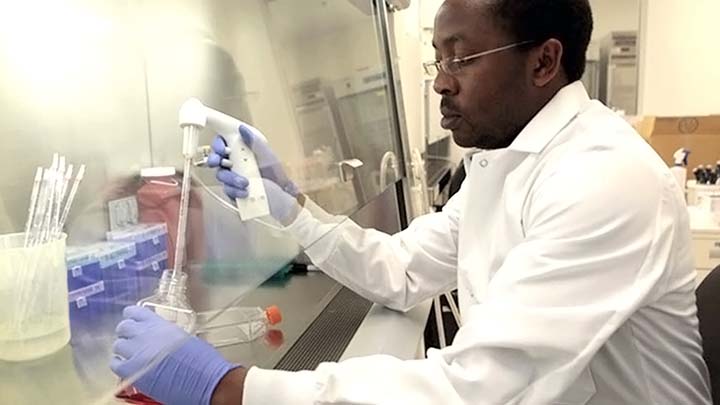World Health Organization Guidelines Reinforce Role of CD4 Cell Counting in Immunocompromised Patients
Photo: Part of the sample network in Uganda (courtesy of Dr Charles Kiayga)

Debi Boeras
CEO of The Global Health Group

Tom Chiller
Chief of Mycotic branch at the Centres for Disease Control and Prevention

Ben Cheng
Specialist Consultant working to develop tech to aid treatment and diagnosis of HIV
The challenge for clinicians monitoring the health of those living with HIV is not just to treat them with antiviral therapies – but to understand exactly how far their immune system has been compromised. Otherwise, they become susceptible to additional life threatening, opportunistic diseases.
It is now standard practice to offer HIV testing, and put patients onto antiretroviral therapies as soon as they receive a positive diagnosis, not only prolonging but also enhancing the quality of their lives. However, if the patient already has advanced HIV disease, and a compromised immune system, they may also need additional interventions to treat diseases such as tuberculosis taking hold.
It is therefore critical that the doctor has a way of identifying how immune compromised the patient is. Once a person is infected with HIV, the virus begins to attack and destroy a special type of white blood cell, called CD4. These cells play a major role in protecting the body from infection. Counting the number of CD4 cells in a patient’s blood is the most accurate way of monitoring how well the immune system is working and predicting the progression of HIV. To reinforce this, the World Health Organization (WHO)* has taken steps to explain the importance of counting these cells by issuing three new guidelines which encourage best practice, explaining under which circumstances it is essential to know a patient’s cell count as well as their viral load. “Up to 30 per cent of patients coming in have advanced HIV disease, which means their CD4 cell count is below 200,” explains Debi Boeras, CEO of The Global Health Impact Group, an organization that brings together key partners to integrate diagnostics and care. “These individuals are likely to be really sick and susceptible to cryptococcal meningitis, TB and other infections that HIV opens you up to.” Accurate and early diagnosis ensures that patients are put on an advanced package of care, also preventing other potentially fatal outcomes. As Tom Chiller, Chief of the Mycotic Diseases branch at the Centres for Disease Control and Prevention, explains, “If you put someone on antiretroviral therapy and you don’t know their CD4 count and the degree to which their immune system is compromised, they could develop IRIS - immune reconstitution inflammatory syndrome – from which they can die.”
CD4 helps identify those patients that are at risk
For advanced disease, clinical observation alone does not provide an accurate assessment of a patient’s health. Many people with a low CD4 count can look well, but their immune system may already be severely compromised. Viral load testing – measuring the amount of HIV in the blood – now enables the clinician to monitor the patient’s ongoing response to HIV treatment. However, before they start or restart antiretroviral therapy, it is still important to know the patient’s CD4 cell count. “What was happening was countries were scaling back CD4 and ramping up viral load monitoring, and in the process some countries weren’t doing CD4 cell count testing at all,” explains Ben Cheng, a specialist consultant who works with a range of partners to develop technologies to aid treatment and diagnosis of HIV. “There are some countries that have a fantastically well run CD4 network. In South Africa they have about 64 CD4 labs and the samples come in and are processed very quickly. That type of system can work fantastically well, but only if you set it up and have the money to run it and maintain it,” continues Chiller.
Improving the infrastructure in rural communities
What is needed is for ministries of health to be able to coordinate CD4 cell count testing on a national scale. However, the majority of countries still don’t have the infrastructure, transport or technology to effectively manage the collection, storage and transportation of the blood once the sample has been taken. In addition, they lack a coordinated reporting process to communicate the test results back to patients and clinics in an efficient and timely manner. The fragmented nature of the transport systems in hard to reach, rural communities also makes it difficult to deliver the necessary diagnostic equipment and the replacement parts and supplies needed to keep the service running. Despite advances in the quality and accuracy of the actual diagnostic tests themselves that are available for near-patient testing, local healthcare communities face a significant financial and logistical burden to manage and maintain them.
Further, with a rapid turnover of the people in the healthcare teams, it’s often difficult to maintain the services that are already being provided in rural clinics. But change is taking place. What is now being developed is an IT infra-structure that supports remote testing in rural areas, so that standards for quality, consistency and instrument maintenance can be monitored and managed. “One of the things we’ve been working on is connecting these point of care technologies up to a central server, so the ministry knows where the devices are, if they’re working and if they’re being used properly,” says Cheng. In addition, ministries of health are learning how to set up the efficient hospital laboratory blood testing services we take for granted in Western Europe.
What can be done to speed up the diagnostic pathway?
“We’ve done a lot of work to ensure the quality of the diagnostics and that they are affordable and accessible in rural areas,” continues Boeras. “This is really promising, but once someone has been diagnosed, the same issues that prevented them from travelling to a lab to get tested in the first place, now prevent them from travelling to see a clinician or accessing treatment.” The longer it takes to link patients with treatment, the more likely they are to fall out of the system completely. “We have four key players: the patient, the clinician, the testing and the treatment,” says Boeras. “In an ideal world we need to get them all into the same room. Bringing the testing together with the clinical support will help to engage people in the healthcare system.” The health of those with HIV depends on specialists from different disciplines working together with a single focus on patient care. “I hope that these new guidelines will advance and reinforce the importance of CD4 testing,” concludes Cheng. “We’re starting a consortium to try and help countries adopt and implement them as rapidly as they can and to get their package of care in place to help people with advanced disease. I hope it will result in decreased mortality and morbidity.”
Why count CD4 cells?
CD4 T lymphocytes (CD4 cells) are a type of white blood cell in human blood that play a major role in protecting the body from infection.
Learn more:
There were approximately 36.7 million people living with HIV at the end of 2016. iii
The African Region is the most affected region, with 25.6 million people living with HIV in 2016.iii
The African region also accounts for almost two thirds of the global total of new HIV infections.iii
CD4 cells are major targets for HIV. The virus binds to CD4 cells, enters them, replicates inside them, and eventually kills them.iv
The Centers for Disease Control and Prevention (CDC) considers people who have an HIV infection and CD4 counts below 200 cells/mm3 to have AIDS (stage III HIV infection), regardless of whether they have any signs or symptoms.v
Talk to an expert about CD4 testing solutions
CD4 Cell Counting

HIV Advanced Disease Management
More than a third of people starting ART have advanced HIV disease, and an increasing number of patients re-present to care at an advanced stage of HIV disease following disengagement from care.
WHO CD4 Guidelines for Immunocompromised Patients
The challenge for clinicians is not just to treat HIV patients with antiviral therapies – but to understand exactly how far their immune system has been compromised. Otherwise, they become susceptible to life threatening, opportunistic diseases.
CD4 Must Not be Sidelined if we are to Beat AIDS
Opportunistic infections that occur in people with weakened immune systems can be fatal. People who have low CD4 counts — especially below 200 — are at very high risk of opportunistic infections.
Funding Drives Countries To Choose Between CD4 Testing And Viral Load
CD4 testing is the recommended way to identify people in advanced stages of the disease and whose reduced immunity therefore exposes them to potentially fatal, opportunistic infections.*References For the role of CD4 in HIV analysis and patient management:
World Health Organization (2016): Consolidated guidelines on the use of antiretroviral drugs for treating and preventing HIV infection: recommendations for a public health approach – 2nd ed.
World Health Organization (2017): Guidelines for managing advanced HIV disease and rapid initiation of antiretroviral therapy. https://www.who.int/hiv/pub/journal_articles/The_evolving_role_of_CD4_cell_counts_in_HIV_care.pdf
In addition, WHO published information notes that further define the role of CD4:
World Health Organization (2017): What’s new in treatment monitoring: Viral load and CD4 testing. Information Note WHO/HIV/2017.22. https://www.thelancet.com/commissions/global-health-HIV
References:
- https://www.thelancet.com/commissions/global-health-HIV
- https://www.who.int/en/news-room/fact-sheets/detail/hiv-aids
- https://www.afro.who.int/health-topics/hivaids
- https://apps.who.int/iris/bitstream/handle/10665/255891/WHO-HIV-2017.22-eng.pdf?sequence=1
- https://www.unaids.org/sites/default/files/media_asset/2020_aids-data-book_en.pdf
- https://www.sciencedaily.com/releases/2018/07/180719195647.htm


